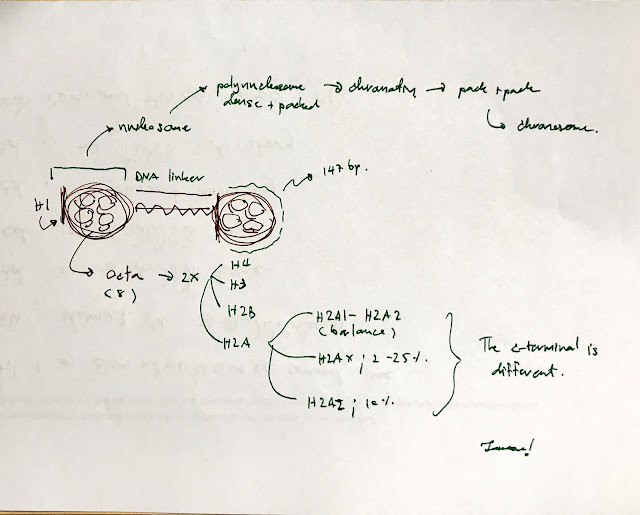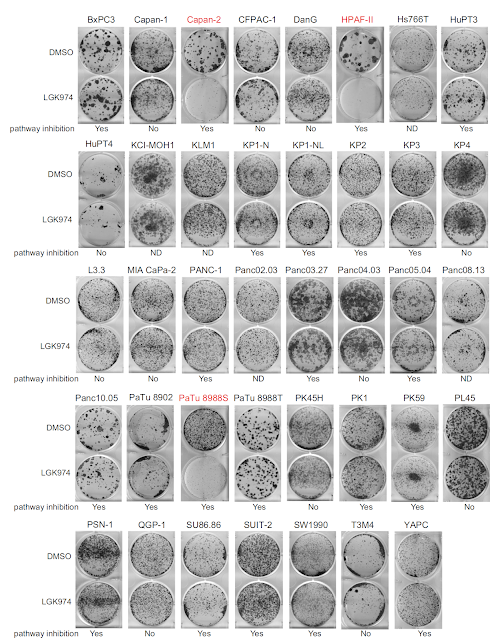gammaH2Ax for my own sake memory!

PTM for Histone; 1. acetylation (Lys) 2. ubiquitination (Lys) 3. phosphorylation (Ser) H2Ax when phosphorylate --> gammaH2Ax! nucleosome = histone (H2A,H2B,H3,H4) + 147 bp DNA wrapping around 8 octa-histone and being locked with H1 (shown in my drawing) For H2A subdivided to 3; H2A1-H2A2 (balance from the other two) H2Ax (2-25%) H2Az (10%) Ref; DNA double-stranded breaks induce histone H2AX phosphorylation on serine 139 ( J Biol Chem. 1998 Mar 6;273(10):5858-68.)
